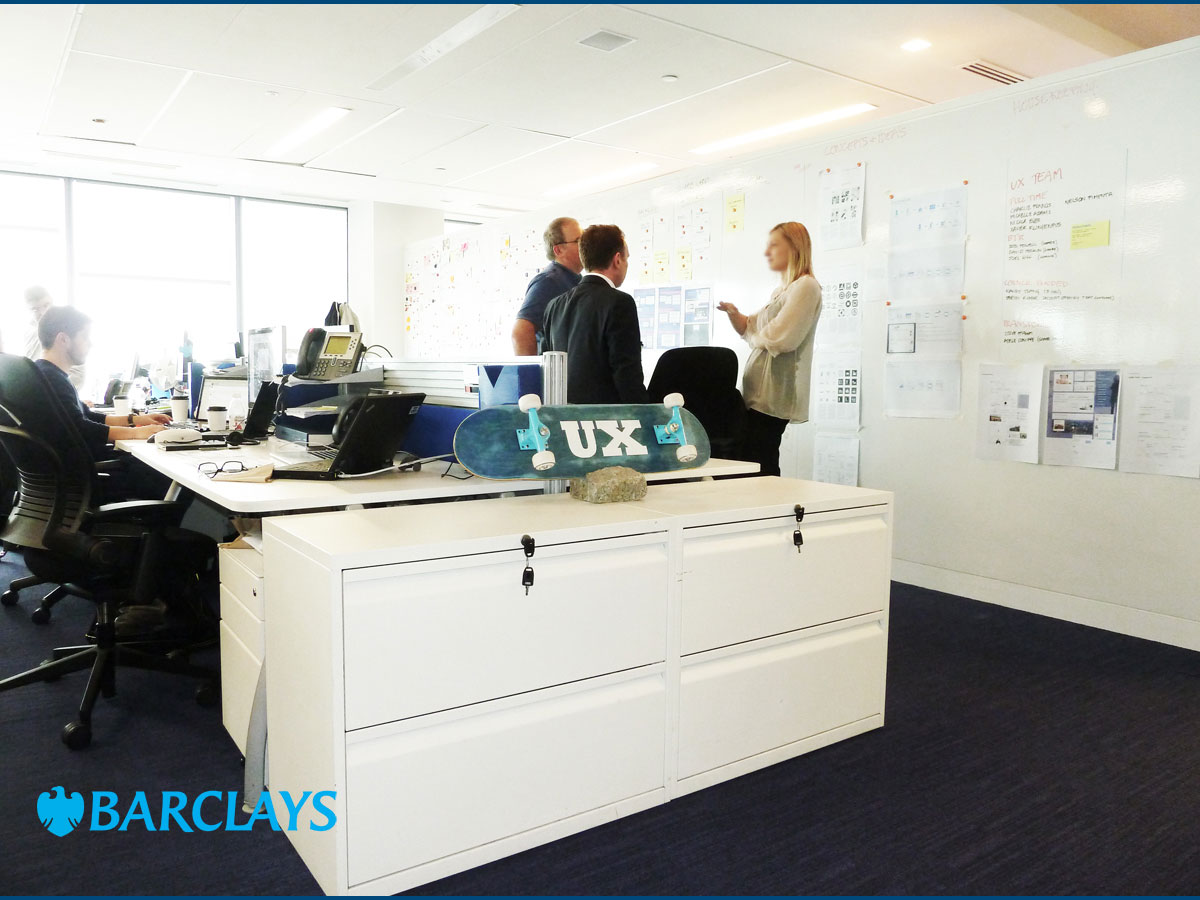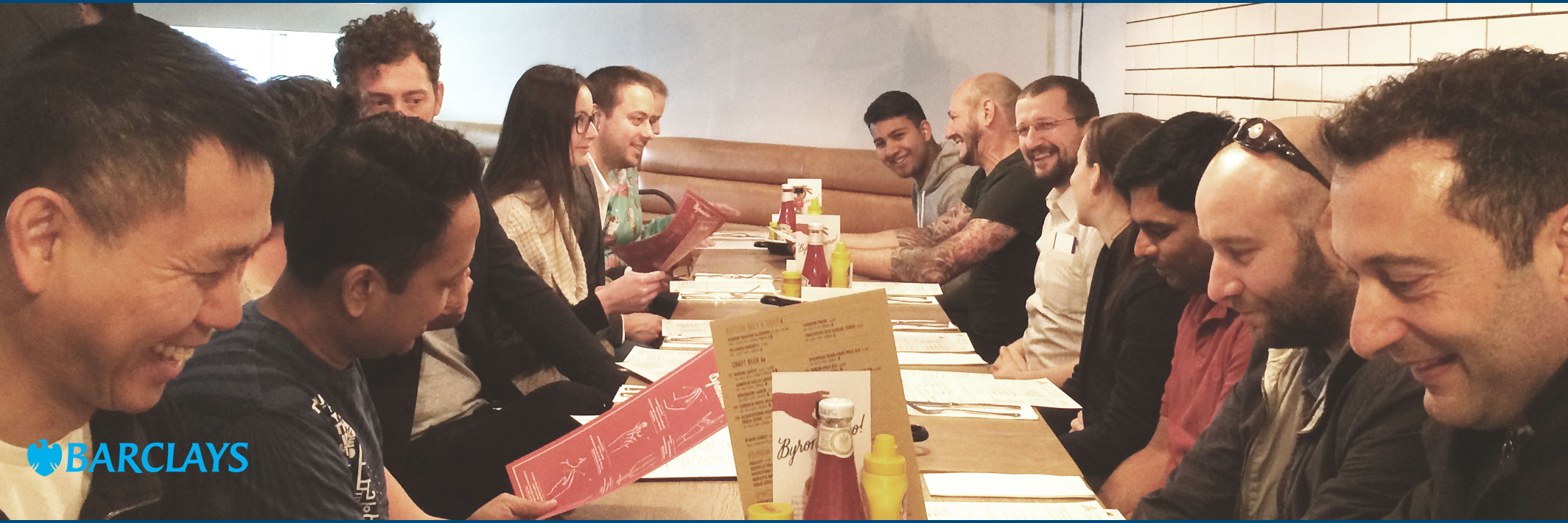
I was asked to turn around the UX team by Jo Brown (Director of Propositions and Development, Digital Banking) who asked me to move from Seren to join her at Barclays. It was the beginning of two or so years of very hard work, I wanted to build a confident team culture that allowed my team to have purpose and enjoy designing in the very demanding and ambitious environment of Barclays Bank.
I grew the team to be the largest team in the Props and Dev department, with a head count of up to sixteen members of staff. With the help of Seren we also built a proper testing process with a UX Lab team in a suite of rooms in the department.
Building a Process
Managing resources
A major challenge was to align the UX teams to volume of work. Not only did we have more work than we could do, but all Barclays projects suffered from terrible scope creep and changing requirements. As the team members managed their own time within the projects this could be very frustrating. There was also no management of demand into the UX team.
I wanted a Kanban board for the team, which we managed with a daily scrum meeting. This became a successful process and allowed the team to take a flexible and responsive approach to demand. We couldn’t solve the problem of scope creep and endless demand but we could manage it within our team. I got a whole wall magnetised and managed a flurry of cards as we worked through projects. We also experimented mirroring the wall in Jira and Confluence which at the time were not widely used by Barclays digital.
Building the Team

Recruiting a happy team
Recruitment was a massive part of building the team, and I was lucky in being able to hire an amazing team of designers. With big projects managing their own budgets we would hire freelancers into the team for the projects. For freelance designers, I preferred experienced designers who were senior often with much more experience than I had. I also had the opportunity to hire full time staff, who were often less experienced and more junior. I expected my full time staff to view Barclays as a step on their career path. I feel with full time staff you are trying to develop them as designers and you are responsible for helping them grow, and if you get that right they will go on to better things.
Building a UX culture
Building a sustainable design culture at Barclays
I wanted to build the basis of a sustainable design culture at Barclays. Barclays was very naive in terms of customer and user experience in design terms when I joined, it had all the problems of large waterfall project management, siloed departments, but there was the opportunity to build small effective team that could punch above its weight.
Whilst I was there and in parallel Barclays went on a massive design spree, and built out a whole floor in Churchill place into a hip Manhattan design loft. Wired reported, ‘Rumor has it that Barclays is now the biggest employer of design talent in London’.
I like to think as Barclays.co.uk’s dedicated UX team we worked through as much if not more than the whole new floor. I was as excited as everybody else at the new design department, and we worked with the new teams on a number of projects. But Barclays digital came to appreciate and know it could rely on our modest team who quietly got things done.

I was very sad to leave, but I had built UX into an effective team, we delivered a lot, and most importantly I hope the UX designers were happy.